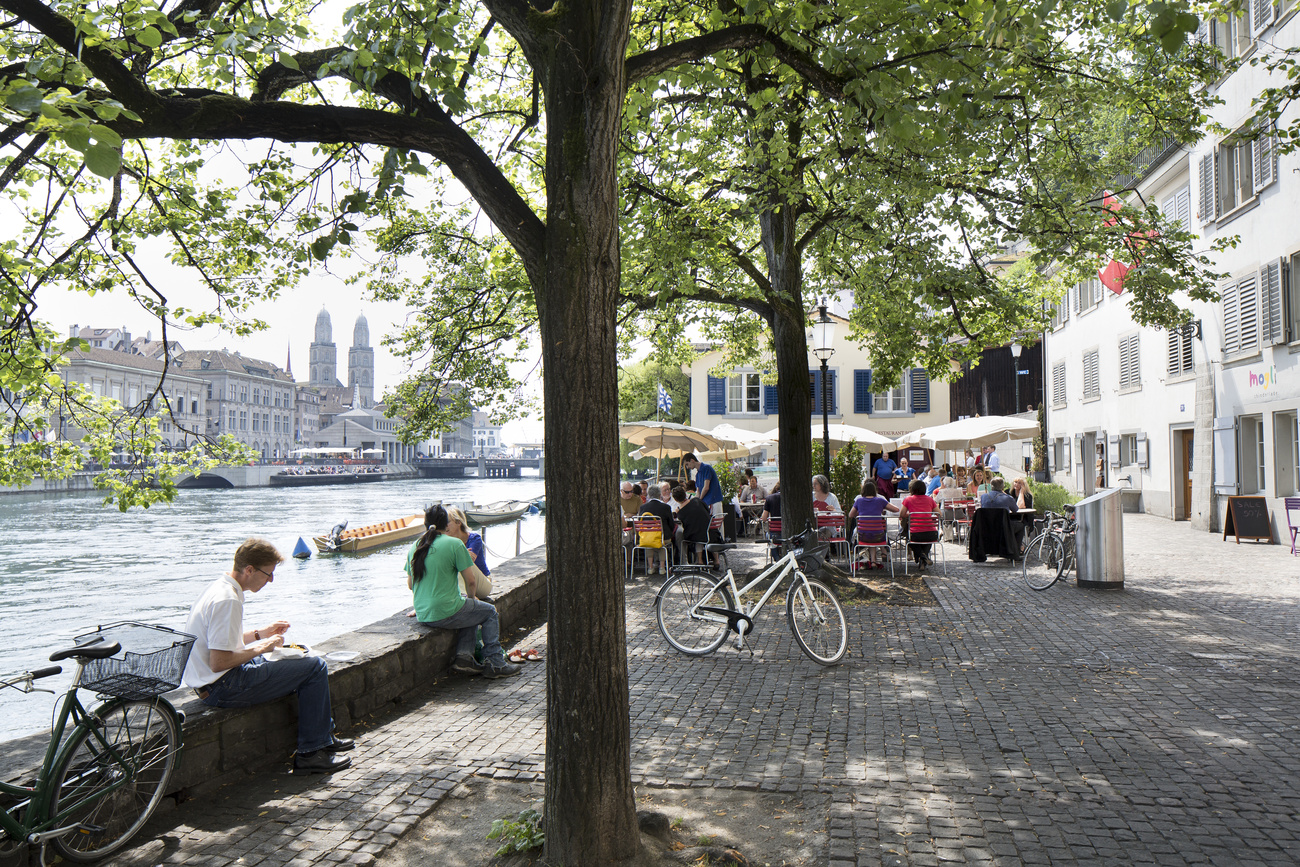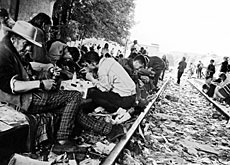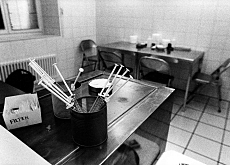Swiss heroin model reporting benefits
A number of studies have found that Switzerland's heroin-assisted treatment plans help ease the scourge of addiction for users and society.
Initially met with criticism and apprehension, the Swiss model is now attracting the interest of other countries.
Programmes for the administration of heroin under medical supervision are still viewed warily by the World Health Organization, which is heavily influenced by governments with repressive drug policies, principally the United States.
But the Swiss model, dating from 1994, is setting trends abroad. Treatments based on heroin have been introduced or tested in Germany, the Netherlands, Denmark, Belgium, Britain, Spain and Canada. Specialists in several other countries, including Italy, are taking a growing interest.
“We have never advertised our programmes, but in recent years we have fielded a lot of queries from health experts and policy-makers in other countries,” said Martin Hosek, coordinator of substitution treatments at the Federal Health Office.
Confirmation from abroad
So far, about 3,000 substance abusers in Switzerland have participated in these programmes, which are an important part of the government’s strategy to stem the damage caused by drugs: death, disease, crime, prostitution and social exclusion.
The treatment programmes are open only to users who have a long history of drug addiction and who do not respond well to methadone or other heroin substitutes.
“Heroin-assisted treatments have certainly proved their worth for a well-defined group of people who have tried other methods and failed. It’s a bit like a last chance for them,” Hosek said.
“In recent years our results have been confirmed by in-depth studies in the Netherlands and Germany. These have also shown that in the most serious cases of addiction, heroin treatments can be more effective than methadone.”
Switzerland’s success with harm reduction has also been highlighted in a study by two researchers at the University of Zurich, sociologist Carlos Nordt and psychiatrist Rudolf Stohler, published in June in the medical journal The Lancet.
Unfounded fears
“In the beginning, people worried that the Swiss government’s liberal policy would attract even more people to heroin. Those fears have proved unfounded,” Nordt stressed.
Nordt and Stohler’s research shows that in the canton of Zurich, home to more than a fifth of Switzerland’s addicts, there were 850 new heroin users in 1990 but just 150 in 2002.
Such a downward curve is not found in other countries, especially those that have tried to crack down on drugs. In Britain and Australia, drug use rose during the same period. In Italy, it vacillated from one year to the next, but the Zurich researchers view that data as incomplete.
“In Switzerland, the medicalisation of heroin use has helped change the image of users: from rebels to losers,” Nordt said. “In the eyes of the young, they’re mostly just sick people, forced to get medical help.”
Reduced consequences
The harm reduction policy followed by the Swiss authorities has also been successful in reducing heroin-related deaths, which have fallen by more than half over the course of a decade, and the transmission of Aids.
And there is more good news concerning the fight against crime and prostitution.
“Compared with countries like Britain, where crime is very often linked to substance abuse, this trend has almost disappeared in Switzerland over the last few years,” said Nordt.
Nordt and Stohler’s study does not however show that Switzerland has been more successful than other countries in improving the numbers of people who manage to leave drugs behind for good.
“Personally, I don’t think either a repressive or a liberal policy can do much to free a heroin user from addiction,” Nordt said. “We can only decide whether to increase the suffering of drug victims or alleviate the consequences of addiction – for users and society alike.”
swissinfo, Armando Mombelli
The heroin plague reached a peak in Switzerland in the second half of the 1980s. Photos of the hundreds of users who congregated in public every day in Zurich were seen around the world in the mass media.
Heroin killed more than 400 users a year and spread disease (Aids and hepatitis), crime and prostitution.
In 1991 Switzerland launched a new strategy, based on the four pillars of prevention, deterrence, treatment, and harm reduction.
In the years to come, various harm reduction strategies were developed: heroin prescription programmes, needle exchanges, and sanitary injection sites.
The open drug scene began to be dismantled in the mid-1990s. Thanks in part to the new programmes, heroin use is declining and the mortality rate has been halved.
Nearly 25,000 heroin addicts live in Switzerland.
Two out of three users are in treatment programmes.
14,500 addicts are being treated with methadone, 1,300 with heroin and 500 with buprenorphine.

In compliance with the JTI standards
More: SWI swissinfo.ch certified by the Journalism Trust Initiative












You can find an overview of ongoing debates with our journalists here . Please join us!
If you want to start a conversation about a topic raised in this article or want to report factual errors, email us at english@swissinfo.ch.